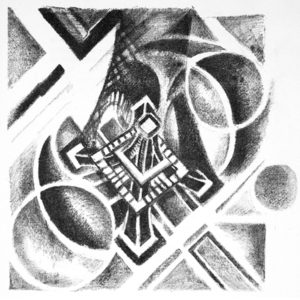Biography
Born in Paris in 1885, Robert Delaunay was introduced to painting by his uncle and in Eugène Rosin's studio, which he joined at the age of 17. He quickly became involved in the artistic circles of the time, and in the Cubist movement, through his participation in the Salon des Indépendants. His first known works, such as the
Saint-Séverin produced between 1909 and 1910.
In the early '10s, Delaunay decided to put color at the center of his work, believing that it alone could make a painting interesting. He therefore set about creating shapes and dynamics from the arrangement of colors, as in the
Circular shapes. Based on this research, he and his wife founded the
Sonia Delaunay the orphist movement, derived from cubism and an important avant-garde movement of the early XXᵉ century.
The Delaunays fled to Spain during the War, and this period served as a perfecting phase for Robert Delaunay, who asserted his mastery of color. In the '30s, Delaunay took up the
Circular shapes and is interested in the connections between painting and music, as in the
Rythmes-Hélices. In 1937, Delaunay was commissioned to decorate two palaces for the Universal Exhibition, and his art took on a monumental dimension that he maintained to the end of his life, creating such immense works as the
Circular Rhythm of 1937. He died in Montpellier on October 25, 1941.


